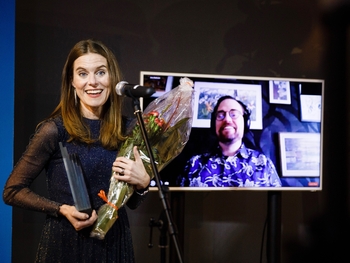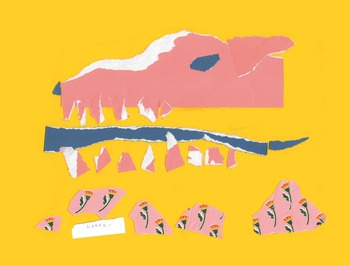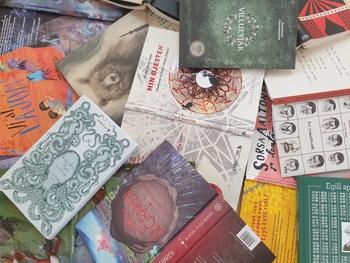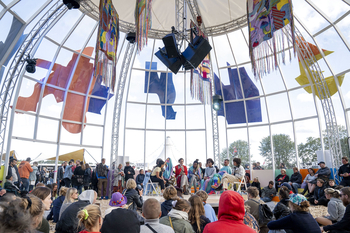Climate crisis engages young readers in the Nordic Region
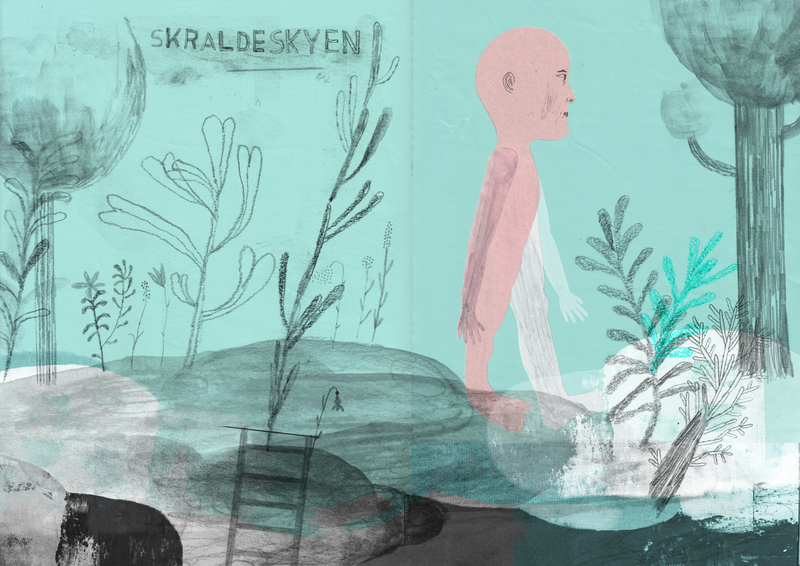
Illustration by illustrator, author, and artist Kamila Slocinska who took part in the Nordic seminar “A changing world – ecocritical currents in Nordic children and young people’s literature”.
Earlier this autumn, 35 authors, illustrators, publishers, researchers, and other actors in Nordic children and young people’s literature met digitally and also face to face in Denmark (adhering to all COVID-19 restrictions) for a three-day seminar called “A CHANGING WORLD – ecocritical currents in Nordic children and young people’s literature” to explore ecocritical tendencies in contemporary literature and share their knowledge and experiences. An associated networking platform gives participants a unique opportunity to provide joint inspirational input for the forthcoming anthology which will communicate the conclusions from the seminar.
The role of literature in a changing world
The Nordic countries have a strong tradition of literature for children and young people. In fact, such literature is among the best-selling and most-read literature in the region. The desire to convey the issues of change and social conditions to children and young people is nothing new, and the same applies also to environmental and climate issues. Nina Goga, professor of children’s literature at Western Norway University of Applied Sciences, explains the trend of recent years:
“From 2000 onwards, attention has been drawn to the link between environmental pollution and climate change, which cannot be explained as normal variations but must be understood as the ultimate consequence of human action and its impact on nature. To a greater extent than before, the books emphasise that ‘everything is connected’ and that major changes in consumer behaviour are necessary in order to stop this impact on the environment and climate. Despite this, and just like many earlier children’s literary texts that deal with environmental destruction, there is still a strong belief in children as well as a great deal of pressure on them to take responsibility and make the changes that are necessary.”
Huge increase in books on sustainability
Since 1993 the Swedish Institute for Children’s Books has read and categorised all children’s books published in Sweden. 2019 was a record year for books addressing issues relating to the environment. This is similar to the trend observed in the other Nordic countries.
“The publication of books dealing with the environment in 2019 is unparalleled in the history of our book reviews. From what I’ve seen of this year’s publications, the environment continues to be a popular topic,” says Lydia Wistisen, lecturer in children and young people’s literature at the Department of Culture and Aesthetics at Stockholm University. She cites the following example from the book “Mitt bottenliv” (2020) by Linda Bondestam.
“Nobody knew where the big chunks went, but we didn’t really ever think about that.” (Quote from “Mitt bottenliv” (2020) by Linda Bondestam.)
“In ‘Mitt bottenliv’ nature is not a passive victim of human exploitation, and the representation of rubbish and pollution is consistently imaginative and aesthetically challenging. To return to the quote, Bondestam depicts an earth whose ecosystems are incredibly fragile but whose vitality remains strong. The spread of the hundred of axolotl fry on the cover resembles the spread of humans across the globe. Although the book provides no direct answers, perhaps everyone has been swept away by the wave. Perhaps the age of rubbish has been replaced by the age of the axolotl.”
Greta, climate anxiety, and a love of nature
With the endless headlines about disasters and climate threats, it’s not surprising that many books are being published offering countless perspectives, each shedding light on both the climate crisis and man’s relationship with nature. There’s everything from handbooks, fact books, and biographies about Greta Thunberg and stories about other environmental heroes or activists to fairytales and picture books. Wistisen believes that children and young people’s literature can be seen as a form of dialogue between children and adults:
“Children and young people’s literature is a type of conversation between adults and children. Literature is one of the adult world’s ways of meeting with and supporting children in their concerns. A book that takes its reader seriously establishes a dialogue with them and makes them feel less alone in their worries. At the same time, literature can also stoke children’s and young people’s anxiety by demanding too much by way of action.”
Anthology from the seminar to be published in 2021
The seminar “The length and breadth of the Nordic Region” is a networking platform for disseminating current research and knowledge about children and young people’s literature in the Nordic Region. This year’s seminar was the second in a series of three seminars. The conclusions from the three days of discussions, workshops, and conversations will be compiled in an anthology of eco-critical trends in Nordic literature for children and young people, including research-heavy essays, drama, and illustrations, which is due to be published in early 2021.
About the initiative
The initiative is part of the Nordic ministers for culture’s focus on children and young people’s literature called LØFTET, which has existed since 2013 when the Nordic Council Children and Young People’s Literature Prize was established. The objective of this three-year project with annual seminars is to create a hotbed for a broad Nordic exchange in the Nordic children and young people’s literature environment by way of a dynamic inter-aesthetic and interdisciplinary group of participants.
Sofie Hermansen Eriksdatter, the head of the secretariat for the Nordic Council’s literature prizes, is the project manager for LØFTET.
